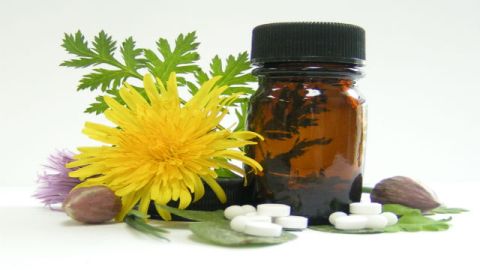Naive Faith in Natural Medicine. A Dangerous Example of The Risk Perception Gap

Have you heard about the Echinacea that was actually ground-up Parthenium hysterophorus, an invasive exotic weed in Asia and Africa which doesn’t do much for a cold but causes serious skin rashes, problems breathing, and makes you fart? Or the St. John’s Wort that was actually a plant called Alexandrian senna, which does nothing for mild depression but works great, as a laxative. (What a drag. You’re still depressed AND you have the runs.)
Or how about those natural Ayurvedic herbal remedies, part of one of the oldest systems of medicine on Earth and often recommended for gastrointestinal problems and other maladies but sometimes carrying levels of mercury, arsenic, and lead thousands of times higher than U.S. standards deem safe.
The toxic heavy metal-laced ‘medicine’ was found by researchers who bought the Ayurvedic products over the counter in Boston and analyzed them in a lab. Can you just imagine how loudly the anti-pharma activists would be screaming, and rightfully so, if such dangerous contamination was found in pharmaceutical products!? Can you imagine how loudly environmentalists would scream, and rightly so, if those egregiously high levels of lead or mercury or arsenic were found in soil or drinking water…or food?!
The fake Echinacea and St. John’s Wort were found in an investigation by Canadian researchers who used DNA testing to see what was actually in the bottle of 44 herbal remedies. As noted in a recent piece in the NY Times, they also found some Gingko biloba, supposedly a memory enhancer, contaminated with fillers that included black walnut, a serious but hidden threat to anyone with a nut allergy. Can you imagine how loudly the activists who oppose genetically modified organisms (GMOs) would scream, and rightly so, if they heard that some Monsanto product labeled as a natural memory enhancer carried a threatening dose of a hidden allergen!? After all, allergic reactions are one of the threats that anti-GMO activists claim that GM technology poses to human health (a claim unsupported by any evidence.)
Then where is the outrage at the open sale of adulterated and outright poisonous over-the-counter medications? Where are the demands for investigations, for tighter regulations? Where are the headlines, the pontificating pundits noting how. once again, the government has failed to protect us? Where is the screaming and hollering? Where is the fear?
Nowhere, is where. And for one simple reason. The adulterated medicines are ‘natural’. They are biologically active substances sold to impact your health, no different than pharmaceuticals. Except they are ‘natural’; fake and/or laced with toxic ingredients, but natural. They belong to an entire class of risks that we are not as worried about – we don’t worry about natural things as much as we worry about human-made ones. So they are not as heavily regulated as the biologically active substances sold to impact your health that come from the pharmaceutical industry.
There could not be a clearer example of the Risk Perception Gap, when our fears don’t match the facts and the gap between our worries and the evidence leads to big time risk all by itself. We often get risk right, but we sometimes worry more than the evidence warrants – about pesticides or nuclear power or vaccines – and sometimes we don’t worry as much as the evidence warns – about climate change, floods and storms, or carcinogenic radiation from the sun that is far more dangerous than nuclear radiation from industrial sources. The reason is simple. Our perceptions of risk are not just about the facts, but mostly about how those facts feel, and one of the underlying psychological characteristics that make things feel more or less scary is whether they are human-made or natural.
The Risk Perception Gap can lead us to do dumb things as individuals. It can also lead us all down a risky dark alley together, because when we all worry about something, and we can’t protect ourselves as individuals, we press the government to protect us. But only from what we are worried about. If we don’t worry, well, there is no need for government protection, right? And largely because natural risks don’t worry us as much as human-made threats, herbal remedies are not regulated nearly as stringently as other biologically active substances that are sold to impact our health. From the NY Times article;
“…policing the supplement industry is a special challenge. The F.D.A. requires that companies test the products they sell to make sure that they are safe. But the system essentially operates on the honor code. Unlike prescription drugs, supplements are generally considered safe until proved otherwise.
Under a 1994 law, they can be sold and marketed with little regulatory oversight, and they are pulled from shelves generally only after complaints of serious injury. The F.D.A. audits a small number of companies, but even industry representatives say more oversight is needed.”
Yes, we need tighter regulation of herbal remedies. But it’s not going to happen anytime soon, because we only have so much room in our Worry Basket, and natural risks are unlikely to find a spot. We won’t start to protect ourselves from this version of the Risk Perception Gap until we realize that the cognitive system of risk perception we rely on to keep us safe, sometimes puts us in danger. Not until we recognize that can we begin to use what we’ve learned about how our risk perception system actually works, to narrow The Gap and keep ourselves safer.





